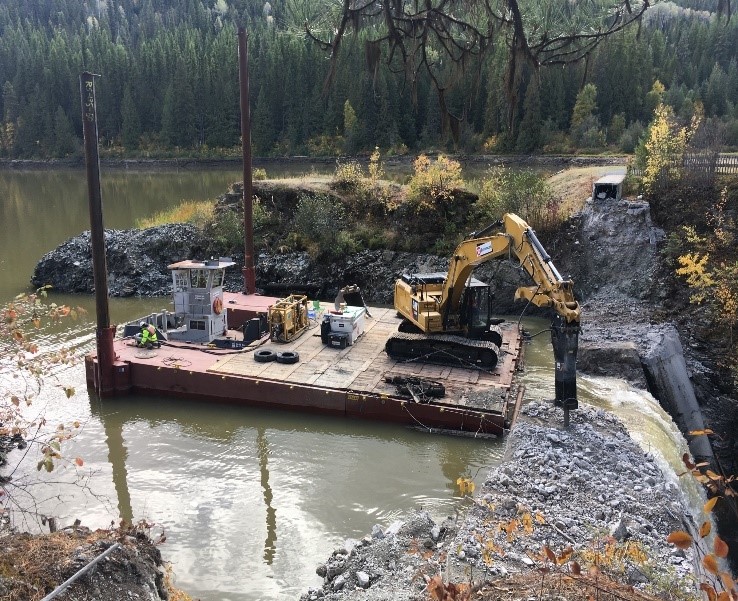 The National Hydropower Association recently announced their 2019 Outstanding Stewards of America’s Waters (OSAW) Awards which recognize projects with extraordinary recreational, historical, environmental, or educational value. Partnered with Seattle City Light, Envirocon’s work at the Mill Pond Dam Removal and Sullivan Creek Habitat Restoration Project won in the Recreational, Environmental & Historical Enhancement category has having offered “enhanced recreational opportunities for the general public; offer measurable benefits that mitigate, conserve, preserve, or enhance the natural resources; or conserve historical aspects of hydropower facilities and their integration with the surrounding community.”
The National Hydropower Association recently announced their 2019 Outstanding Stewards of America’s Waters (OSAW) Awards which recognize projects with extraordinary recreational, historical, environmental, or educational value. Partnered with Seattle City Light, Envirocon’s work at the Mill Pond Dam Removal and Sullivan Creek Habitat Restoration Project won in the Recreational, Environmental & Historical Enhancement category has having offered “enhanced recreational opportunities for the general public; offer measurable benefits that mitigate, conserve, preserve, or enhance the natural resources; or conserve historical aspects of hydropower facilities and their integration with the surrounding community.”
Seattle City Light, Envirocon, and project stakeholders undertook the challenge of removing the Mill Pond Dam with an innovative approach focused on restoring floodplain connectivity, system resiliency, and recovery of native fish populations. The Mill Pond Dam was originally constructed in 1909 using a log crib design; in 1921, a 134-foot-long, 55-foot-high concrete dam replaced the original structure. The dam had not provided hydropower or flood protection for more than 50 years and disrupted downstream sediment and wood transport.
The project team implemented a design with a focus on watershed resiliency: a multi-thread stream channel and floodplain complex that can freely adjust to a variety of flow conditions. This approach required the final channel and floodplain elevations to match the pre-dam conditions. To achieve this design, several hundred thousand cubic yards of accumulated material had to be flushed from the system. The team decided the best possible approach for this site was to utilize the power of Sullivan Creek and an upstream water storage reservoir to flush the accumulated sediment out of Mill Pond.
In total, the Mill Pond Dam Removal and Sullivan Creek Habitat Restoration Project restored connectivity to more than 46 miles of upstream habitat. The project included more than 85 acres of floodplain and riparian restoration; 9,000 linear feet of restored channel; 2,500 linear feet of channel enhancement; 4,700 linear feet of side channel enhancement and creation; and the installation of more than 1,200 pieces of large wood to enhance aquatic habitat. The project also restored large wood and sediment transport processes in the stream.
For more information regarding this project, please visit https://www.hydro.org/news/nha-announces-2019-outstanding-stewards-of-americas-waters-award-winners/